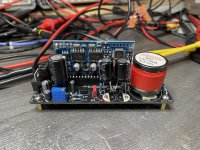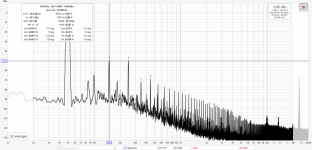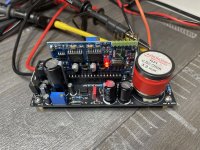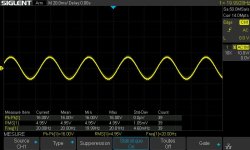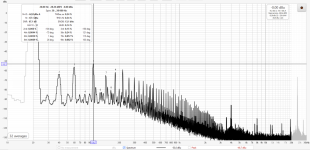Hello,
My latest creation.
LVPS DC-AC Regulated Inverter EGS
This DC-AC regulated power supply board is used to power the audio tube heater with AC voltage. The voltage is adjustable from 4V to 8V via a potentiometer on the PCB.
The LVPS DC-AC Regulated Inverter EGS board is based on the use of the EGS002 module. It is a control board for pure sine wave inverters, primarily used in DC-AC power conversion systems.
It integrates the EG8010 chipset for generating pure sine waves with digital control and dead-time management. The module supports fixed frequencies of 50Hz and 60Hz, as well as adjustable frequencies ranging from 0 to 400Hz (need mods on the EGS002 module).
It offers protections against overvoltage, undervoltage, overcurrent, and overheating. The board is also equipped with an independent fuse to protect the EGS002 module (5V and 12V). To avoid damaging the tubes, there is a 3 second soft start mode by default.
The LVPS DC-AC Regulated Inverter EGS board operates up to about 4A with an input voltage of 15Vdc or 24Vdc. It can be configured with different inductors in the output filter depending on the types of audio tubes to be heated and the needed power.
The board has an output on 3 pins with an optional middle point (2 resistors to be soldered under the PCB). This avoids soldering the cathode resistors onto the tube socket.
Gerber and documentation files are available on my GitHub repository.
This power supply has not yet been tested in real time on a tube amp. This will be the next step as soon as I have completed another related project.
Enjoy !
Stef.
My latest creation.
LVPS DC-AC Regulated Inverter EGS
This DC-AC regulated power supply board is used to power the audio tube heater with AC voltage. The voltage is adjustable from 4V to 8V via a potentiometer on the PCB.
The LVPS DC-AC Regulated Inverter EGS board is based on the use of the EGS002 module. It is a control board for pure sine wave inverters, primarily used in DC-AC power conversion systems.
It integrates the EG8010 chipset for generating pure sine waves with digital control and dead-time management. The module supports fixed frequencies of 50Hz and 60Hz, as well as adjustable frequencies ranging from 0 to 400Hz (need mods on the EGS002 module).
It offers protections against overvoltage, undervoltage, overcurrent, and overheating. The board is also equipped with an independent fuse to protect the EGS002 module (5V and 12V). To avoid damaging the tubes, there is a 3 second soft start mode by default.
The LVPS DC-AC Regulated Inverter EGS board operates up to about 4A with an input voltage of 15Vdc or 24Vdc. It can be configured with different inductors in the output filter depending on the types of audio tubes to be heated and the needed power.
The board has an output on 3 pins with an optional middle point (2 resistors to be soldered under the PCB). This avoids soldering the cathode resistors onto the tube socket.
Gerber and documentation files are available on my GitHub repository.
This power supply has not yet been tested in real time on a tube amp. This will be the next step as soon as I have completed another related project.
Enjoy !
Stef.
Attachments
-
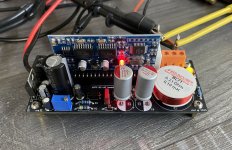 DC-AC-Inverter-1.0.3.jpeg862.3 KB · Views: 74
DC-AC-Inverter-1.0.3.jpeg862.3 KB · Views: 74 -
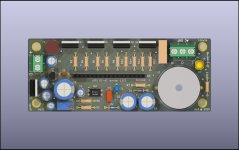 LVPS-DC-AC-Inverter-EGS-3D-NOEGS.jpg360.6 KB · Views: 64
LVPS-DC-AC-Inverter-EGS-3D-NOEGS.jpg360.6 KB · Views: 64 -
 LVPS-DC-AC-Inverter-EGS-FRONT.jpg413.3 KB · Views: 58
LVPS-DC-AC-Inverter-EGS-FRONT.jpg413.3 KB · Views: 58 -
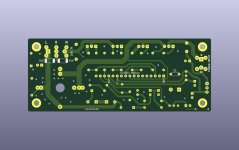 LVPS-DC-AC-Inverter-EGS-BACK.jpg302 KB · Views: 56
LVPS-DC-AC-Inverter-EGS-BACK.jpg302 KB · Views: 56 -
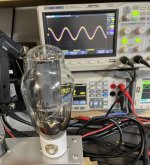 300B&scope.jpeg932.6 KB · Views: 67
300B&scope.jpeg932.6 KB · Views: 67 -
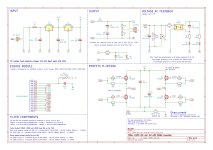 LVPS-DC-AC-Inverter-EGS-diagram.jpg541.2 KB · Views: 55
LVPS-DC-AC-Inverter-EGS-diagram.jpg541.2 KB · Views: 55
Hello
I've completed the setup of the 300B version (and others direct heated tubes).
The filter consists of a Mundorf 3.3mH choke and two 470uF Panasonic EEU-FR1V471 capacitors (model to be used).
We've achieved a distortion reduction of 0.4% with a better SNR. The 150Hz and 250Hz are at -50dB. 1KHz at -84dB. The 23.5KHz on the far right is the carrier of the EG8010 chip.
My latest measurements also show that the power supply works best at 15Vdc input. The SNR is a little worse at 24V.
Regards,
Stef.
I've completed the setup of the 300B version (and others direct heated tubes).
The filter consists of a Mundorf 3.3mH choke and two 470uF Panasonic EEU-FR1V471 capacitors (model to be used).
We've achieved a distortion reduction of 0.4% with a better SNR. The 150Hz and 250Hz are at -50dB. 1KHz at -84dB. The 23.5KHz on the far right is the carrier of the EG8010 chip.
My latest measurements also show that the power supply works best at 15Vdc input. The SNR is a little worse at 24V.
Regards,
Stef.
Attachments
Last edited:
Hello,
For those who are proficient with SMD soldering, it's possible to mods the EGS002 module to make it operate at 20Hz, for example (below 10/15Hz, it's unstable).
This pushes the 20Hz carrier and the harmonics below audible frequencies. This gives you the best of both worlds: AC voltage, which prevents premature tube wear, and a power supply that should theoretically be silent.
Modifications to the EGS002 module are very simple, but you'll need a very good magnifying glass. 😉
Regards,
Stef.
For those who are proficient with SMD soldering, it's possible to mods the EGS002 module to make it operate at 20Hz, for example (below 10/15Hz, it's unstable).
This pushes the 20Hz carrier and the harmonics below audible frequencies. This gives you the best of both worlds: AC voltage, which prevents premature tube wear, and a power supply that should theoretically be silent.
Modifications to the EGS002 module are very simple, but you'll need a very good magnifying glass. 😉
Regards,
Stef.

